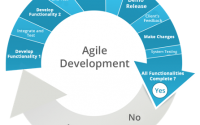Very often done Data Migration Mistakes.
Moving data between storage formats or computer systems is not an insignificant job, mainly when it consists of both structured and unstructured data. One should be able to recognize and avoid certain basic data migration mistakes, such as:
-
Not involving the lines of business and business users at the beginning
After merging multiple systems into one, companies often need to recognize the correct business uses at the beginning. In other words, consult the people who will be actually operating the system and using the data into the migration project.
-
Lack of organizational structure and data governance policies
It is an integral part of a business to have a governance structure. Privileges need to be defined in order to create, approve, edit, or remove data from the system.
-
Not so good quality of data in an inheritance system
It should be mandatory to assess the quality of present data in a legacy system before getting on to a data-migration job. Such as, will the existing data support new users? What is it missing? And what are you planning to do? Etc. But companies often don’t pay much attention to all this.
A thorough evaluation makes it easier for companies to assess the amount of work necessary for migrating legacy data effectively.
-
Not updating and validating business rules
For running the business successfully, company’s business and validation rules updating are must as it may not be as per current standard. These updates will ensure that your existing data match, comply or map with the business rule.
In addition, especially when a migration includes important information such as payroll, financial, and inventory data, auditors must ensure that data moved from a legacy system to a new system has been validated.
-
Failure to validate and test the data-migration process
It is really necessary to keep validating and testing throughout the project’s life cycle. One should keep in check the following:
How to test the data? Who will test and evaluate it? Who will sign off on it? And who’s the eventual consumer of the data?
-
Involvement of non-experienced employees in industry best-practices
Employees may be an expert in what they do, but that doesn’t necessarily mean they are equally knowledgeable in data management, migration, and governance.
-
Too much dependency on the tools of the job
Mostly due to inexperience staff a data-migration project often end up with IT department, which may not be proficient enough to manage it. Thus, improper use of a migration tool can wind up moving bad data.
-
Cross-object dependencies
In the migration process, cross-object dependencies are often learned very late which can further throw off migration timeline. A complex project may have several different data objects coming in from a vast range of different applications. Only at the end while dealing with the clients we search for those missing pieces of data or dependencies.
-
Often trying to go live in one single big upload
Instead of assuming that everything is fine and just by hitting a button all the data will load without any problem, it is necessary to have a project timeline with several, iterative test loads along the way.
-
Budget overruns due to Inadequate planning in beginning
Because of improper planning at the start of a project budget often gets out the range and this happens usually when project is in realization stage.







